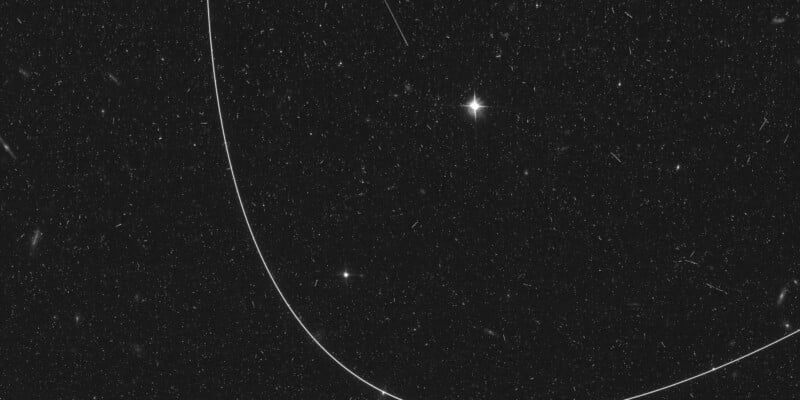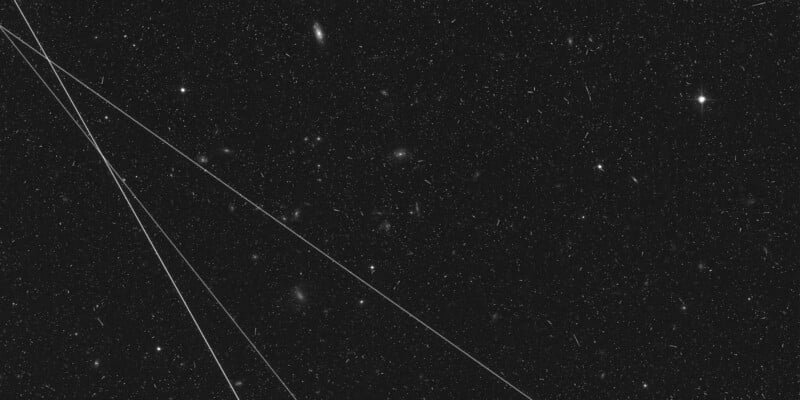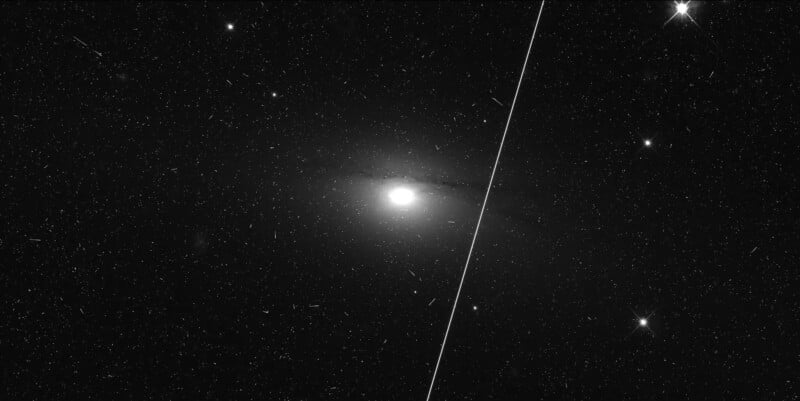Satellites are Spoiling Images Taken by the Hubble Space Telescope

The images taken by the Hubble Space Telescope are increasingly being spoiled by thousands of satellites streaking through the sky.
A study published in Nature Astronomy reveals an increase in the number of images recorded by Hubble that are blemished by passing satellites such as SpaceX’s Starlink.
NASA is being forced to remove the satellite streaks in post-processing which can block the distant galaxies scientists are trying to study. However, the space agency says that for now, it’s not a huge issue.
“While such analyses may show a gradual increase in detected satellite trails over time, most of these streaks are readily removed using standard data reduction techniques, and the majority of affected images are still usable,” a spokeswoman tells The New York Times. “Satellite streaks do not currently pose a significant threat to Hubble’s science efficiency and data analysis.”


Hubble’s Shrinking View
The Hubble Space Telescope was launched in 1990 and has revolutionized humanity’s understanding of the cosmos as well as delivering iconic images such as the pillars of creation.
In the 33 intervening years, thousands of satellites have been launched into orbit and most of them live 10 miles above Hubble; with the telescope residing roughly 335 miles above Earth’s surface.
To study the effect of this phenomenon, astronomers from the Max Planck Institute for Extraterrestrial Physics in Germany analyzed hundreds of thousands of Hubble images taken from 2002 to 2021.
They found that from 2009 to 2020, satellite streaks affected 3.7 percent of Hubble’s images. But in 2021, that number jumped to 5.9 percent — an increase that corresponds with the rise of Starlink.
![]()
![]()
Since the study was concluded, there have been significantly more SpaceX launches. The analysis was done when there were 1,652 Starlink satellites in orbit; as of February 2023, there are over 3,580 satellites.
The Elon Musk-owned company has said it hopes to expand its system to 42,000 satellites and there are many other companies launching satellites into orbit with a combined 431,713 slated to launch in the future.
If only 100,000 satellites were launched in the coming years, the number of satellites in space would increase tenfold meaning roughly 50 percent of Hubble’s images would have a satellite streak in them.
“When will Hubble not be useful anymore?” Dr. McCaughrean, the co-author of the study, ponders to The New York Times. “That might be 10 or 20 years away, but it’s not inconceivable that there’s a point at which you say, ‘Let’s not bother anymore.’”
Image credits: NASA/ESA/Kruk et al.